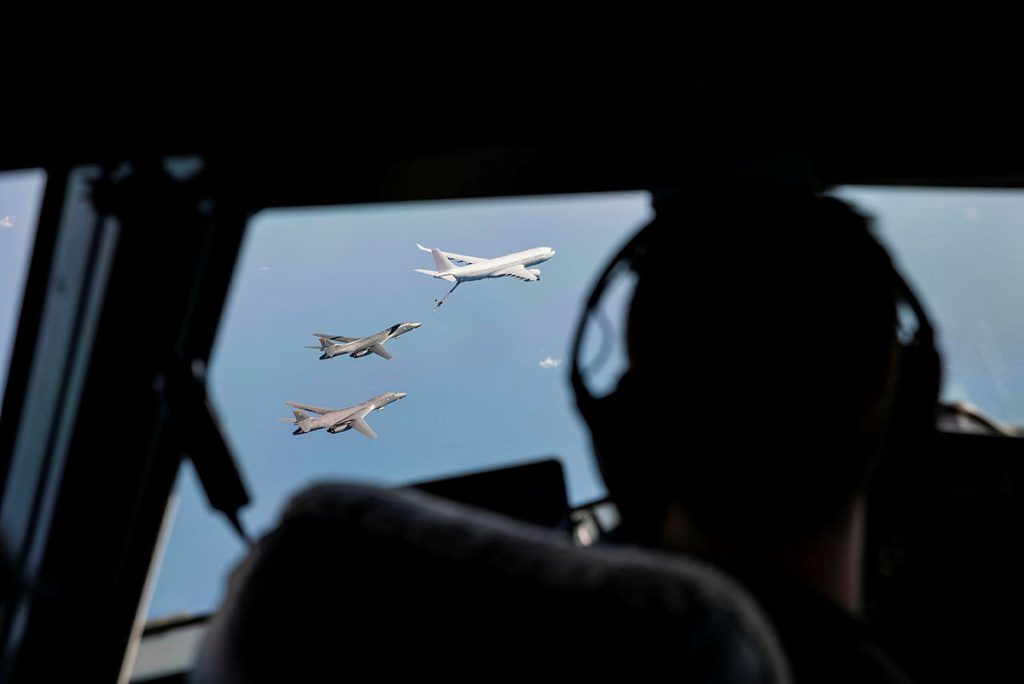
As Australia’s foreign and defence ministers and the US secretaries of state and defence prepare to meet for the annual AUSMIN consultations, ASPI has today released a collection of essays exploring the policy context and recommending Australian priorities for the talks. This is the introduction to the volume.
While AUSMIN 2022 will no doubt discuss global issues, the consultations these days are first and foremost about the Indo-Pacific. This continues a steady shift in recent years away from counterterrorism and the Middle East, and towards traditional defence, cyber threats, critical technologies, foreign interference and hybrid warfare, as Australia reset its security policy to focus on China and the US began its uneven pivot to Asia.
In the past decade, the reality of specific threats posed by Beijing has punctured the blissful optimism that prevailed in both countries. The task now ahead of the AUSMIN principals is to devise ways to settle into a lengthy period of what Foreign Minister Penny Wong calls ‘stabilised relations’ with China. The alliance’s effectiveness will be tested by how it transitions from the failed policy of engagement for engagement’s sake, and the more recent necessity of countering malign activity, to a cohesive, long-term strategy of engagement with due diligence for national and regional security, and sovereignty.
In a global threat environment so complex and overlapping, Australia once again has its work cut out to ensure that the US maintains a clear-eyed focus on the Indo-Pacific and doesn’t view China or the region as longer term issues to which it can return at a later date. Since last year’s AUSMIN, Russia has invaded Ukraine (no end to that war is in sight), and tensions have risen in the Middle East through developments relating to both Iran and Saudi Arabia. Cybersecurity has gone mainstream: there have been multiple state and non-state intrusions stealing and revealing the personal data of citizens. And the threat of climate change is being properly recognised as an international security issue.
The rise in tensions across the Taiwan Strait, underscoring that conflict in the Indo-Pacific is a genuine possibility, makes US lethargy hard to imagine. Tellingly, President Joe Biden’s statement that we’re now in ‘the decisive decade’ can be understood to refer to competition with Beijing. Nonetheless, US leadership will be needed to counter multiple threats simultaneously over a long period. As an ally that doesn’t expect propping up but does a fair share of heavy lifting, Australia is well placed to encourage Washington to focus that leadership on Indo-Pacific strategic competition. The outcomes of the defence strategic review and the AUKUS pathway decision should fortify Australia’s influence on US thinking and decision-making.
The objective of long-term, stabilised relations with Beijing has a solid basis on the shared Australian and US principle of ‘cooperate where we can and counter where we must’. At least initially, the cooperation aspiration will be mainly rhetorical, as there are few areas in which genuine trust is strong enough. But US and Australian commitment to do so where possible will strengthen our ability to counter Beijing’s malicious behaviour from a position of moral high ground, which is so vital for the global narrative. This cooperation requires foreign and defence policies to work hand in hand, but not to be merged into a single strategy that either overmilitarises foreign policy or underplays the need for hard power to strengthen deterrence. As Deputy Prime Minister and Defence Minister Richard Marles said recently, ‘Improving our national security isn’t provocation; it’s prudence.’
The overall assessment of this ASPI compendium is that AUSMIN 2022 has the chance to forge a realistic but positive shared agenda for the Indo-Pacific region. This should involve a China strategy that will address the dual objectives of improving US and Australian national security and building support from a nervous region by presenting positive initiatives that focus on other countries’ priorities, such as climate action and economic development. While it might sound counterintuitive, progress on the second will give Australia and the US more room to be transparently strong on the first.
Bringing countries along on regional initiatives will increase not only their understanding of the challenges but their resilience to them and willingness to work with us to manage them. The Indo-Pacific is complex; Southeast Asian and Pacific island states understandably worry about great-power rivalry and rising tensions, but are even more anxious about the prospect of American disengagement. Investment in the Indo-Pacific driven by a positive vision will help persuade regional countries that US commitment is long term and will survive future presidential elections.
There’s no further scope for delay. With the strategic environment shifting faster than observers predicted, AUSMIN should yield a joint commitment to making 2023 a decisive year for strengthening the alliance’s collective defence and security, and for increasing the region’s collective resilience. AUSMIN should commit the alliance to shaping the focus and future of the region through military deterrence and diplomatic influence. The path ahead is precarious, but success will be measured by nothing less than whether the alliance can live up to its responsibility of drawing on our combined military and diplomatic strength to help keep competition from tipping into conflict.

